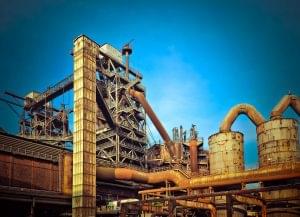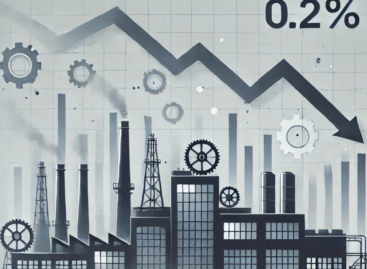According to analysts, despite the Russian-Ukrainian war, industrial production expanded in June
In spite of the Russian-Ukrainian war, industrial production expanded in June – the analysts pointed out in their analysis sent to MTI, commenting on the latest data of the Central Statistical Office (KSH).

Analysts saw an increase in several industrial sectors. (Photo: Pixabay)
KSH announced on Friday that the volume of industrial production in June 2022 exceeded the previous year by 1.5 percent, adjusted for the effect of working days, production increased by 4.8 percent compared to the same period of the previous year, and compared to the previous month, the industrial output based on seasonally and working day-adjusted data.
Gábor Regős, the professional head of the Macronomic Institute, emphasized that despite the unfavorable circumstances, such as the Russian-Ukrainian war, the shortage of spare parts, and rising energy prices, industrial production was able to expand both on a monthly and annual basis, and the performance of the sector was more favorable than expected. The more important manufacturing sectors played a role in the growth, while the production of the smaller sectors decreased. Among the larger sectors, it is worth highlighting vehicle production, where the growth also indicates that in June production was less hampered than previously by the lack of parts. The performance of the German industry, which is important from the point of view of the Hungarian industry, although showing less co-movement than before, also developed favorably – wrote the professional leader.
According to the professional leader of the Makronóm Institute, in the second quarter, industrial production may have made a positive contribution to economic growth, the annual output growth of the three months amounted to an average of 4.7 percent. In the following period, the volume of industrial production will be influenced by factors in the opposite direction. The Russian-Ukrainian war further exacerbates the already existing problems in the field of supply chains, while the increase in energy prices also complicates the activities of the sector.
Péter Virovácz, the senior analyst of ING Bank, emphasized that in the last two months, the level of industrial production has returned to the level seen at the beginning of the year, and it seems that the manufacturers managed to bridge the supply disruptions caused by the war. He drew attention to the fact that, after the May industrial data, there was a similarly large discrepancy between the raw data and the data adjusted for the effect of working days in the case of June, the reason for this being that there were fewer working days available for production in June this year than a year earlier. Looking ahead, the uncertainty is extremely high, and although the BMI (purchasing manager index) indicates a trend-like industrial growth in the near future, this should be treated with serious reservations, especially if companies will encounter new supply difficulties – explained the senior analyst of ING Bank.
Gergely Suppan, the lead analyst of Magyar Bankholding, pointed out that industrial production in June increased by 71.1 percent compared to the low point in April 2020, increased by 25.4 percent compared to the 2015 average, and exceeded the 2010 average by 53.3 percent. average production level. The annual growth of industrial production slowed down slightly in the second quarter after the expansion in the first quarter, practically stagnating compared to the previous quarter. In the medium term, the Hungarian economy can benefit significantly from the investments of BMW and Mercedes, as well as from the development of defense industry capacities, as a significant increase in military spending is expected in the coming years, Gergely Suppan added.
According to János Nagy, Erste Bank’s macroeconomic analyst, it is favorable that the vehicle industry was able to expand again on an annual basis, but at the same time, the fact that the vast majority of sub-sectors decreased may be indicative for the future. The short-term outlook remains marred by many uncertainties.
MTI
Related news
KSH: industrial production decreased by 0.2 percent in October
In October, the volume of industrial production fell by 0.2…
Read more >KSH: in November consumer prices exceeded the same monthly values of the previous year by 3.7 percent
In November, consumer prices exceeded those of a year earlier…
Read more >The price of stuffed peppers has increased by 9 percent
According to data from the Central Statistical Office, 90.61 thousand…
Read more >Related news
Recognition of Consumer Protection Excellence: Honoring the Best of 2024
This year’s outstanding consumer protection officers and special award recipients…
Read more >The Joy of Giving! – SPAR stores collect non-perishable food for people in need
The Hungarian Maltese Charity Service and SPAR Hungary have launched…
Read more >KSH: industrial production decreased by 0.2 percent in October
In October, the volume of industrial production fell by 0.2…
Read more >





